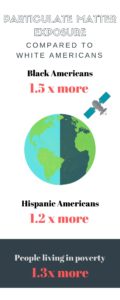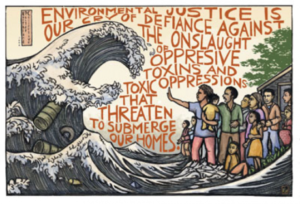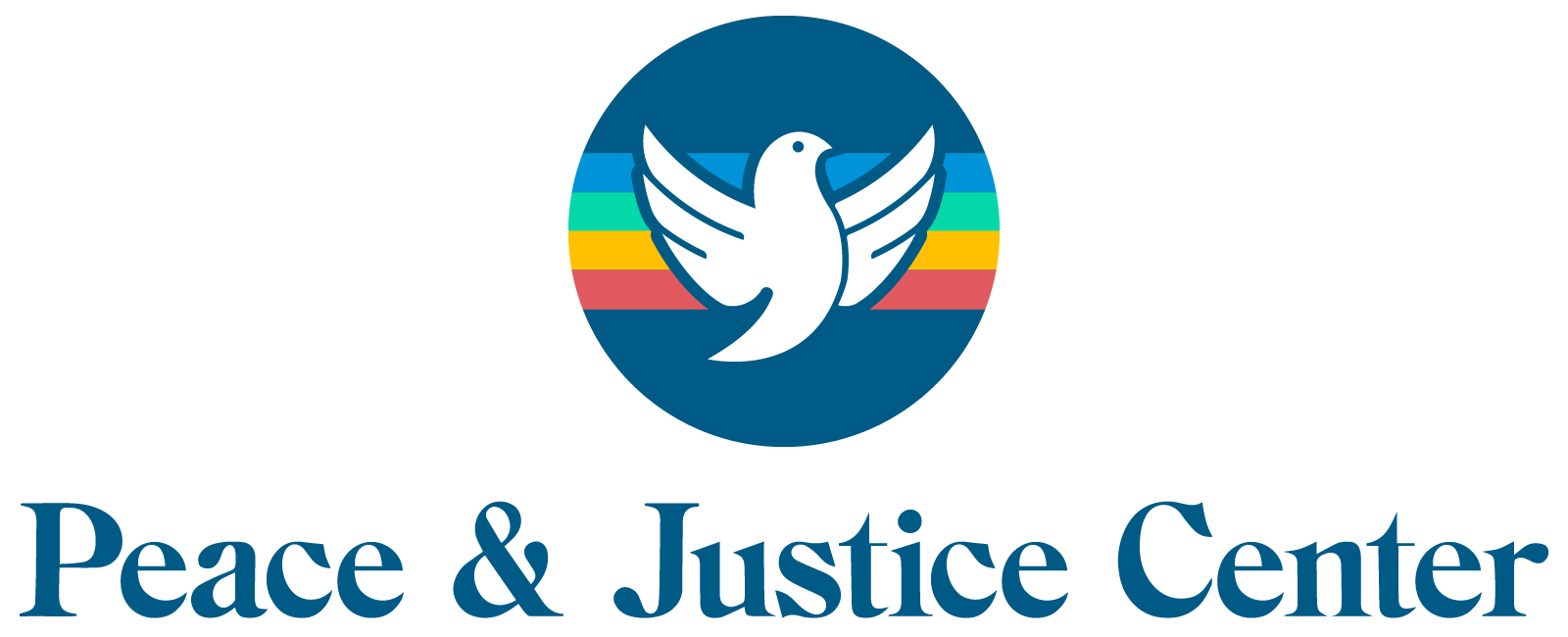-Michaela Compo, PJC Fair Trade Intern
The term environmental racism was coined by Benjamin Chavez to refer to the movement developed in the 1970’s and 80’s, but the idea can be traced back over 500 years to when the Europeans originally arrived in the Americas and displaced the local population.
In Chavez’s words, environmental racism is:

Evident on a local, regional, and global scale, this interdisciplinary issue demonstrates the ways in which marginalized populations are more intensely impacted by environmental issues, thus perpetuating the struggle of and discrimination against people of color and those of low socioeconomic status. This targeting is centered around increased exposure to fine particulate matter (FPM) including but not limited to, auto fumes, oil smoke, groundwater nitrates, viruses, and additional toxic byproducts of human civilization. In the U.S., populations of color are exposed to between 1.2 and 1.5 times more FPM than white americans. Following the same trend, people living in poverty are exposed to 1.3 times more FPM. Combined with the systemic factors of lack of political representation, mobility, and well-paying jobs, at-risk communities are exposed to increased devastation after natural disasters, in addition to various health implications such as an increased prevalence of heart disease, asthma, and high blood pressure.
Even in the age of climate change, the environment is still primarily considered as a problem of nature, that which is heavily influenced by the human population, yet many people fail to admit that racism is both a cause and result of such changes.
 In short, the effects of climate disasters are worsened upon marginalized populations. They receive less media coverage, disaster relief aid, and funding for sustainable development. Further, such populations’ territory is often taken advantage of due to lax environmental policies and regulations. In the case of the Ogoni people of the Niger Delta, their main water source has been degraded by the exportation of hazardous oil fracking and burning of toxic waste by Shell. This disregard for life and heritage is a prime example of environmental racism in the Global South, yet it is important to note that this racism is present in communities globally.
In short, the effects of climate disasters are worsened upon marginalized populations. They receive less media coverage, disaster relief aid, and funding for sustainable development. Further, such populations’ territory is often taken advantage of due to lax environmental policies and regulations. In the case of the Ogoni people of the Niger Delta, their main water source has been degraded by the exportation of hazardous oil fracking and burning of toxic waste by Shell. This disregard for life and heritage is a prime example of environmental racism in the Global South, yet it is important to note that this racism is present in communities globally.
In response to environmental racism and the prioritization of white people’s health and well-being, one of the most effective ways an individual may benefit those harmed is to be a conscientious consumer. In this century the human race has become more interconnected than ever before. Consumers influence the global climate, literally and figuratively, through the products they choose to purchase. Options sourced through fair trade principles are a fantastic option for people who are looking to support an industry that values human life and the natural environment.
 The Peace and Justice Store carries several brands that follow fair trade principles, including a women-run cooperative in Guatemala called UPAVIM. This organisation emphasizes not only women’s empowerment through handcrafts, but provides opportunities for women in their bakery, soy factory and health clinic. Through their work with textiles, their environmental stewardship shines in the practice of using recycled materials and educating the youth in their programs about the importance of a sustainable society. Their business model has allowed for them to establish a sustainable platform that remains nonreliant on donations. In this way the company is able to help provide for and work to improve their community of La Esperanza, in sustainable efforts.
The Peace and Justice Store carries several brands that follow fair trade principles, including a women-run cooperative in Guatemala called UPAVIM. This organisation emphasizes not only women’s empowerment through handcrafts, but provides opportunities for women in their bakery, soy factory and health clinic. Through their work with textiles, their environmental stewardship shines in the practice of using recycled materials and educating the youth in their programs about the importance of a sustainable society. Their business model has allowed for them to establish a sustainable platform that remains nonreliant on donations. In this way the company is able to help provide for and work to improve their community of La Esperanza, in sustainable efforts.
Beyond being a conscientious consumer, simply educating oneself about the issues present across the globe and the implications of such dilemmas is a valuable practice that benefits all.
